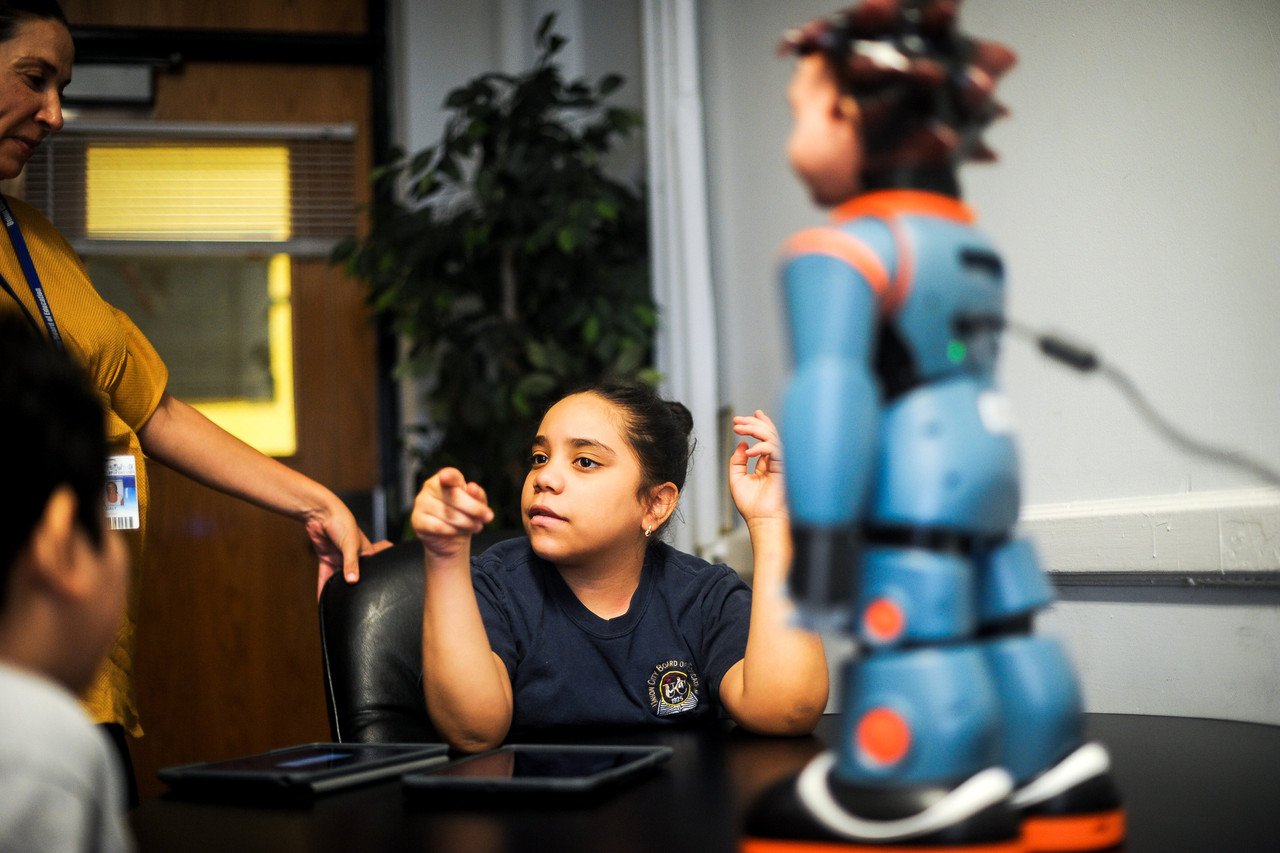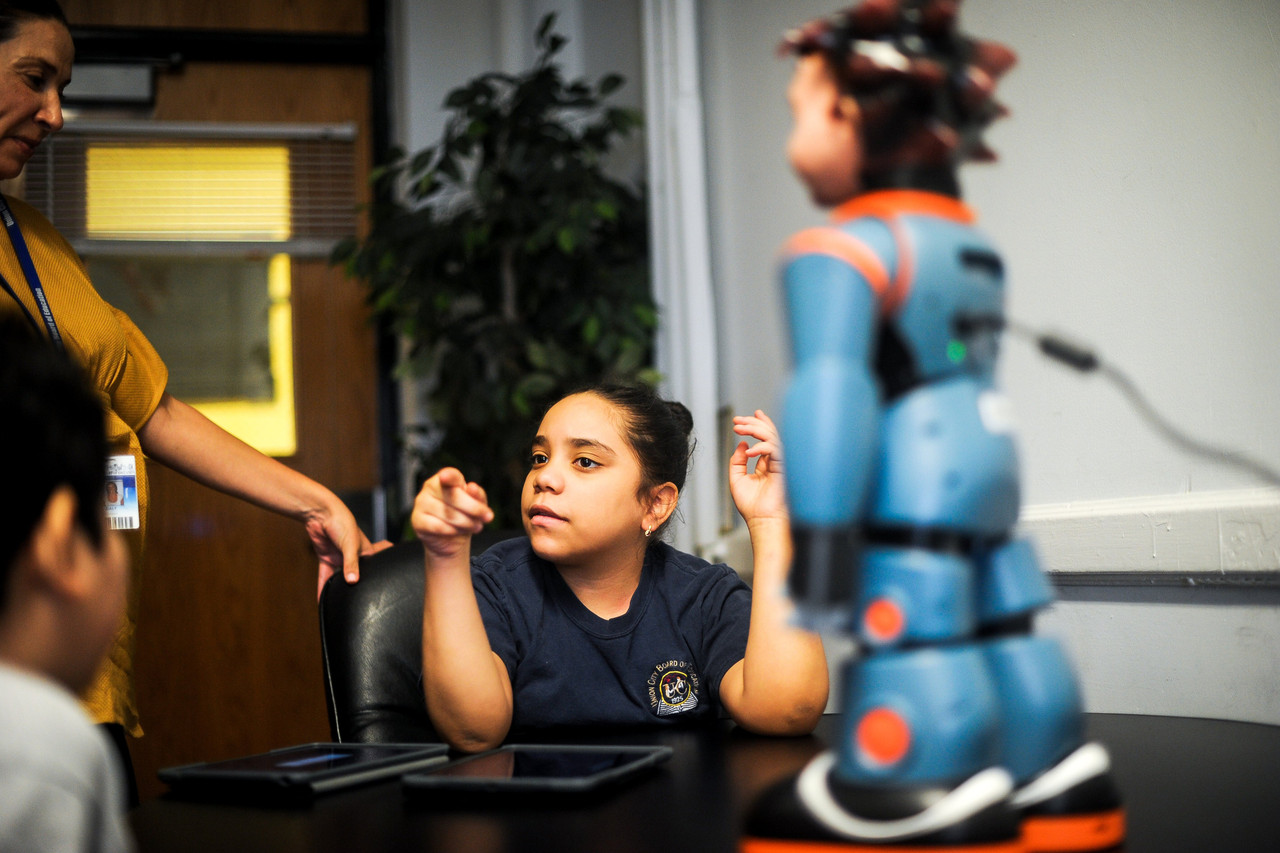
Two third grade students sit slumped in an office at Robert Waters Elementary School, a 2-foot robot named Milo on the table before them.
Milo moves his hands and eyebrows, blinks and makes eye contact during a session that is used as part of their autism therapy.
“Today we’re going to talk more about conversations between two people,” says Milo in a computer generated boy’s voice that’s 20% slower than normal. “A person in a conversation may ask the other person a question and then listen for their answer and then say something else.”
Click here to read the full article.


